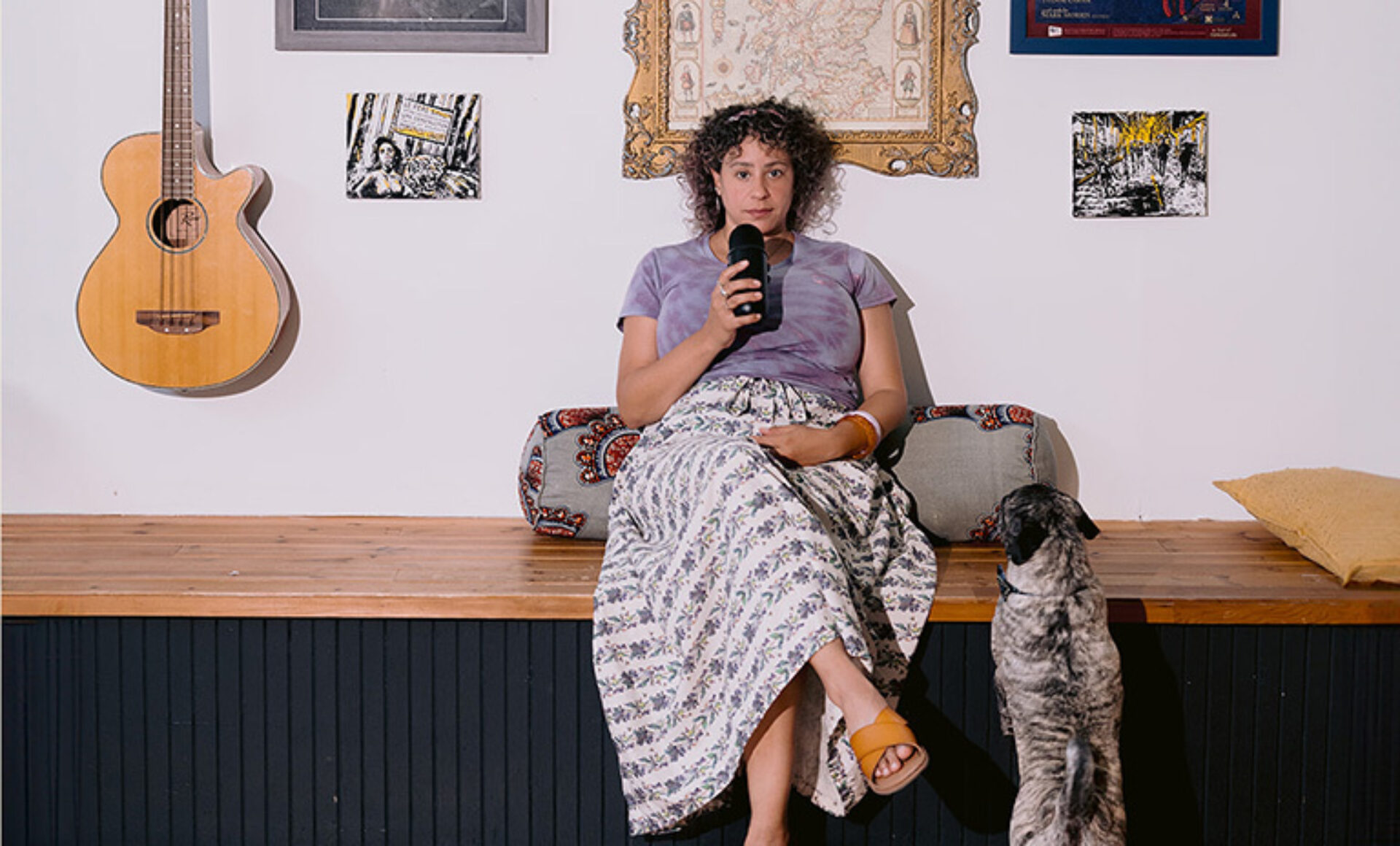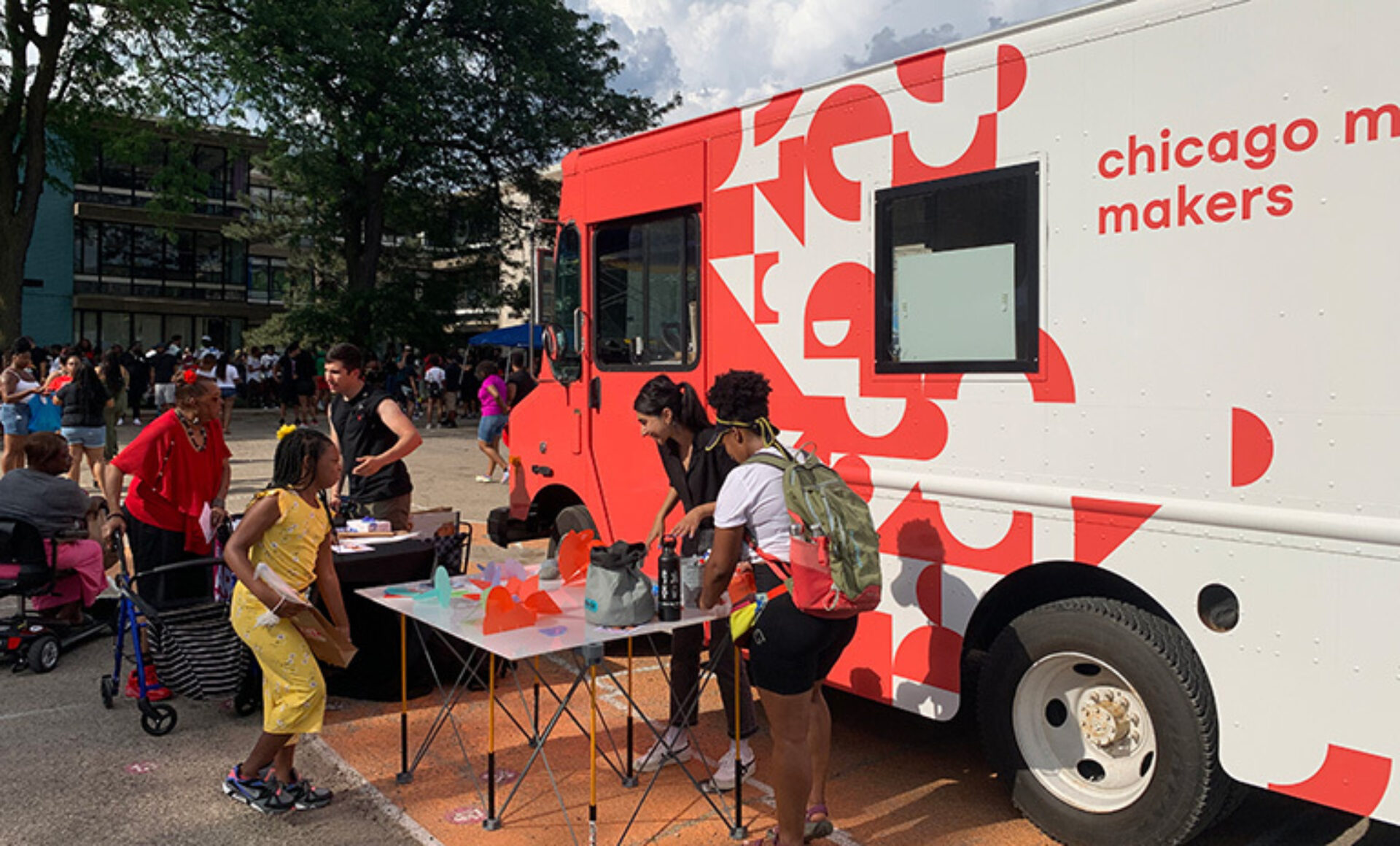Known around campus as the “virtual reality guru,” Tilanka Chandrasekera, Ph.D., IIDA, is a boundary-pushing educator who has helped transform Oklahoma State University (OSU) into a cutting-edge leader in emerging technologies. He engages and inspires students, faculty, and the community with his innovative curriculum, dedication to mentorship, technology workshops for teens, and tech centers for Oklahoma’s Native American tribes.
As the 2025 IIDA Educator of the Year, Dr. Chandrasekera isn’t just an exceptional role model to other design educators, but to designers and leaders who aspire to embrace the future of design technology and to uplift young people, emerging designers, and everyone around us. His work has positioned OSU’s department of Design and Merchandising, in which he is both a professor and associate department head, at the forefront of evolving design technology in an educational setting, equipping students with skills to operate in an evolving industry. Here are five major things Chandrasekera has accomplished as OSU’s Christine Salmon Endowed Professor and director of the university’s Mixed Reality Lab.
Developed the Digital Design Graduate Program and curriculum
Dr. Chandrasekera developed a Digital Design Graduate Program, which includes an accelerated track plus online and onsite graduate degrees, as well as undergraduate and graduate certificate options. The accelerated pathway enables undergraduate students to earn a master’s degree with just one additional year of study.
This program engages students in research for inclusive, empathetic design — using technology like gerontology suits and immersive virtual reality simulations, they’re able to better understand challenges like mobility issues and visual impairments. Students develop advanced technological and research skills that help prepare them for leadership in an evolving design industry, enabling them to meet current industry demands while anticipating future digital design trends.
Dr. Chandrasekera has also developed five additional digital media courses, which broaden the scope of existing curriculum and allow for cross-departmental learning opportunities.
Established OSU’s Mixed Reality Lab and Mixed Reality Classroom
In 2015, Dr. Chandrasekera established the state-of-the-art Mixed Reality Lab at Oklahoma State University to bolster undergraduate research and facilitate technology-driven research. The lab provides students with high-tech tools allowing them to explore augmented reality (AR), virtual reality (VR), digital prototyping, motion capture, psychophysiology, 3D prototyping, electromyography, and eye-tracking technology.
The lab provides students from diverse disciplines the ability to conduct theoretical study and hands-on exploration using emerging design technologies; research ranges from careful assessments of hospitality environments to technology-related research with older adults. This collaborative environment also supports OSU’s annual Designathon (more on that below).
Adjacent to the lab is the Mixed Reality Classroom, with 25 VR stations which allows students to use new technologies alongside CAD. The immersive learning environment enhances technical skills and encourages students to push the boundaries of conventional design thinking.
The Mixed Reality Lab and Mixed Reality Classroom have emerged as pivotal tools for student recruitment and have established OSU as one of the top 10 AR/VR schools in the Southwest since 2021.

Photo by Elliot Mandel
Annual Designathon
In 2018, Dr. Chandrasekera launched a cross-disciplinary experiential learning opportunity for students in the form of an AR/VR hackathon. The event was so popular that it has since become an annual event attracting participation from students around the world. The Designathon has prompted students to tackle complex, real-world design problems ranging from wearable dwellings for refugees to mental health interventions, designing for diversity, and space exploration. (In the last example, NASA scientists spoke with students about challenges encountered aboard the International Space Station.)
This interactive platform allows students to grapple with real-world challenges through problem-based learning — an approach where students learn by working together to solve open-ended problems — broadening their perspectives on interior design and refining their critical thinking and collaboration skills.
Commitment to mentorship and community engagement initiatives
Centering mentorship in his work, Dr. Chandrasekera has spent more than a decade as an internship coordinator, initiated multiple mentorship initiatives at OSU, and has hosted numerous community workshops and initiatives. “Mentorship remains integral to my focus,” Chandrasekera says.
The programs he has launched include the Peer Teaching (PeTe) mentorship program, pairing upperclassmen with underclassmen to support their academic success and career readiness; the Partnership for Excellence in Technology and Environmental-Design (PETE) program, connecting students with industry professionals in evidence-based design projects; and the Near Peer Program within OSU’s Department of Design and Merchandising, specifically tailored for Interior Design undergrads.
Dr. Chandrasekera also engages the local community through workshops and initiatives that encourage interest in STEM, aimed at middle and highschoolers and specifically young girls. He has led intergenerational workshops to ensure accessible, inclusive, impactful learning for older adults and other diverse communities. Plus, he secured funding from the National Science Foundation to establish technology centers forOklahoma’s Native American tribes, emphasizing spatial-design-focused STEM curricula in informal settings.
Connecting OSU students across departments, and on a global level
Not only does he find it important for students to connect inter-departmentally on campus, but he has provided opportunities for students to gain experience on a global level — and has found numerous ways to deepen the value of students’ design education.Dr. Chandrasekera was the driving force behind the return of OSU’s Global Education Program, providing students with study-abroad and educational opportunities outside the U.S. In 2021, he took on the challenge of getting OSU’s Interior Design program accredited through the Council for Interior Design Accreditation (CIDA), setting students up for more opportunities upon graduation.
Throughout his tenure at OSU, he has developed several design courses exploring how to use AR/VR for social good while aligning with the UN Sustainability Goals, and a course looking at the ethics of AI.
Dr. Chandrasekera’s work has provided students at OSU with access to state-of-the-art technology and a sense of what it means to be a global citizen, allowing them to think big about how the best design solutions consider a broader range of users, and aim to make space for everyone.






